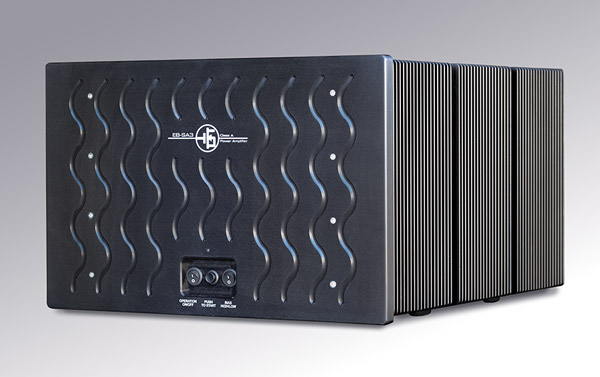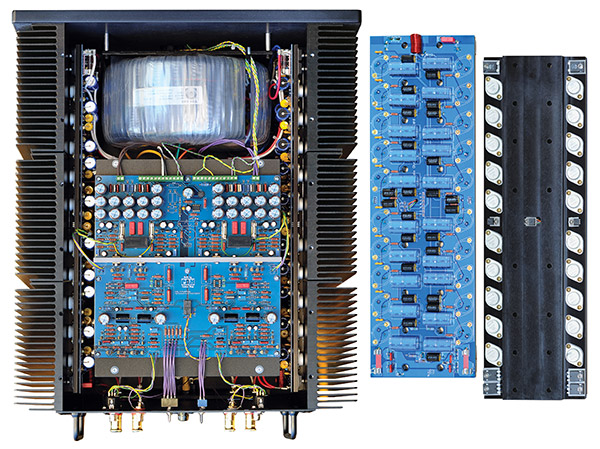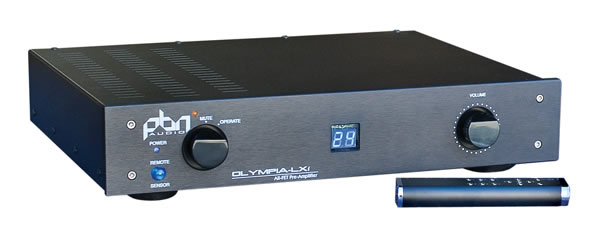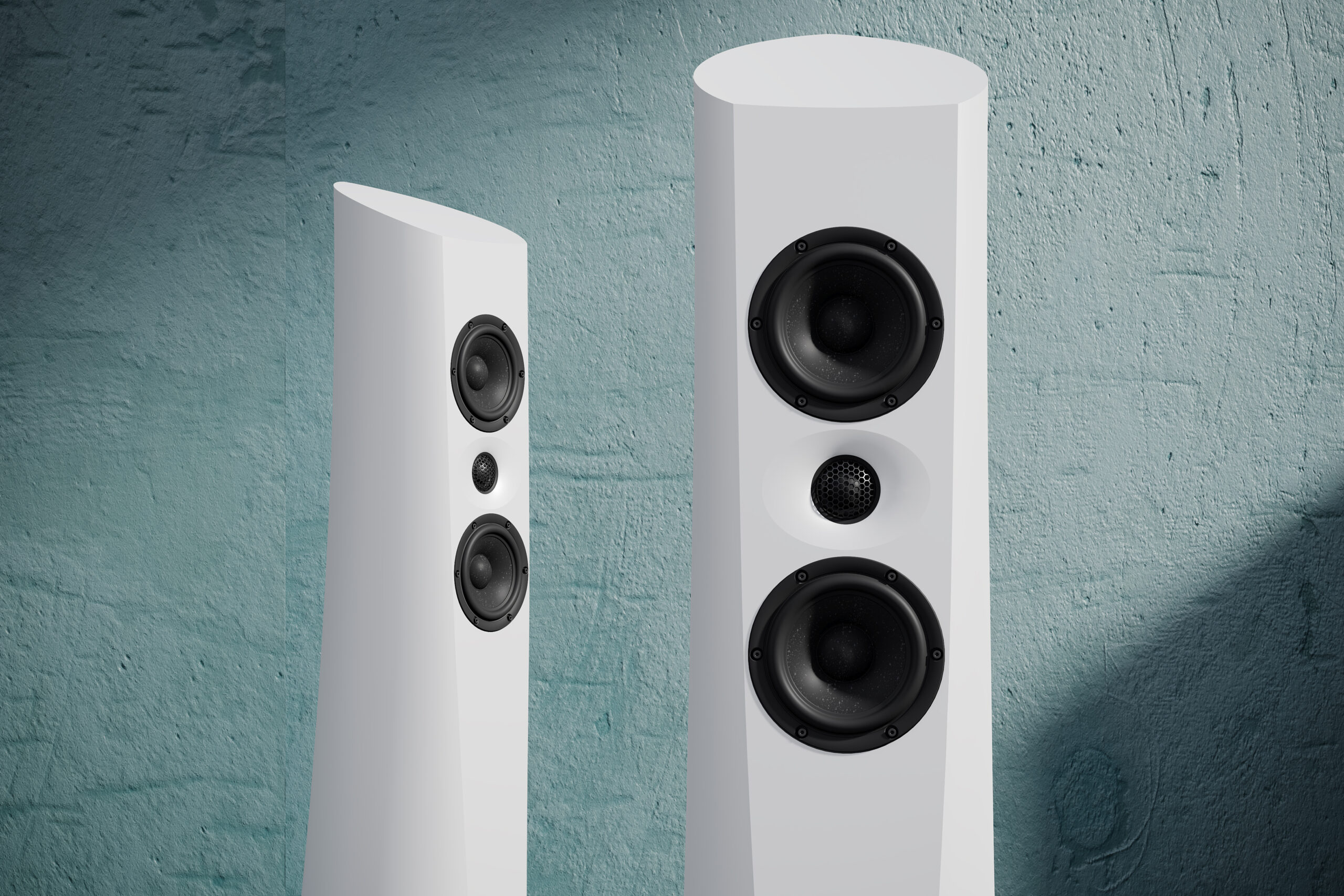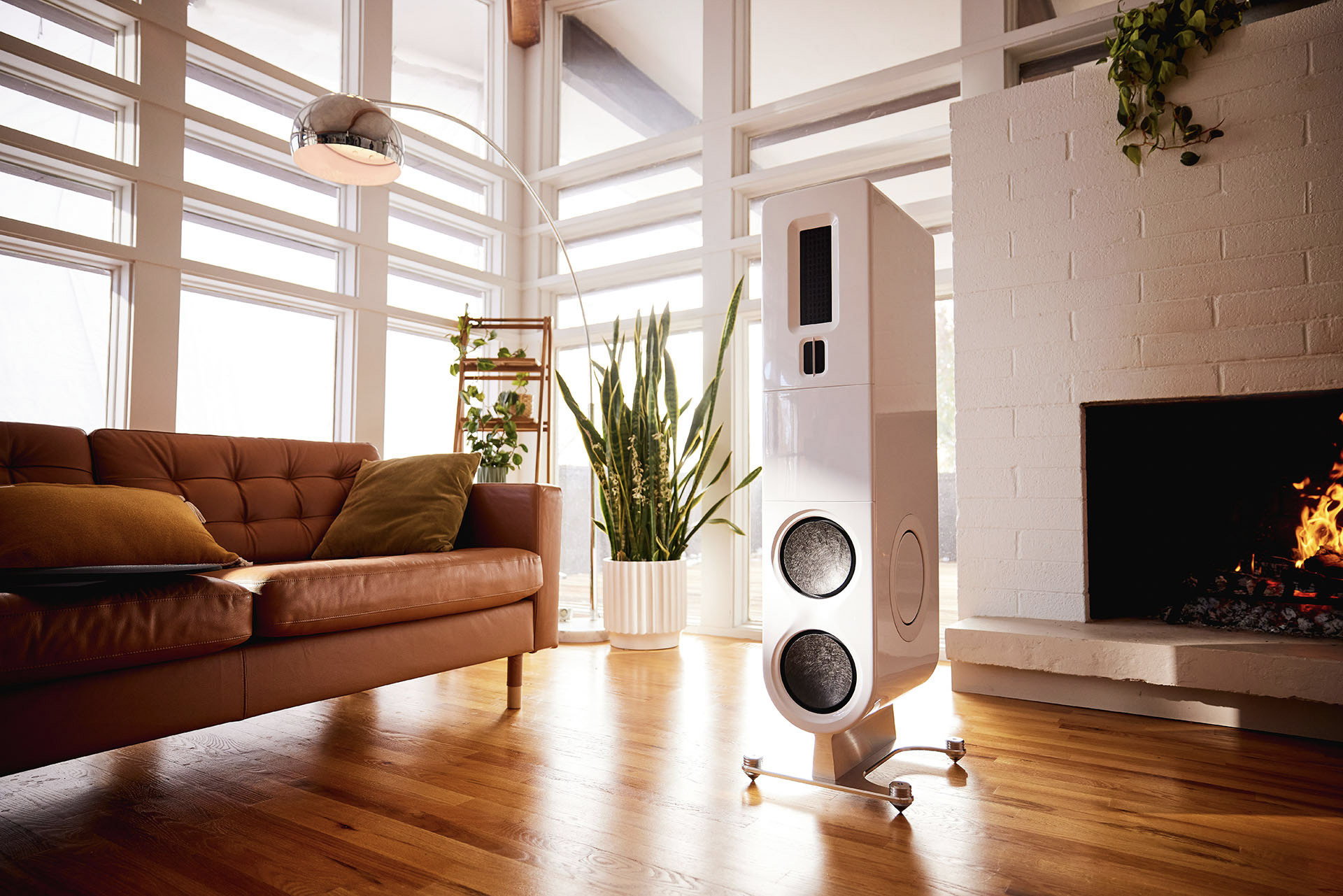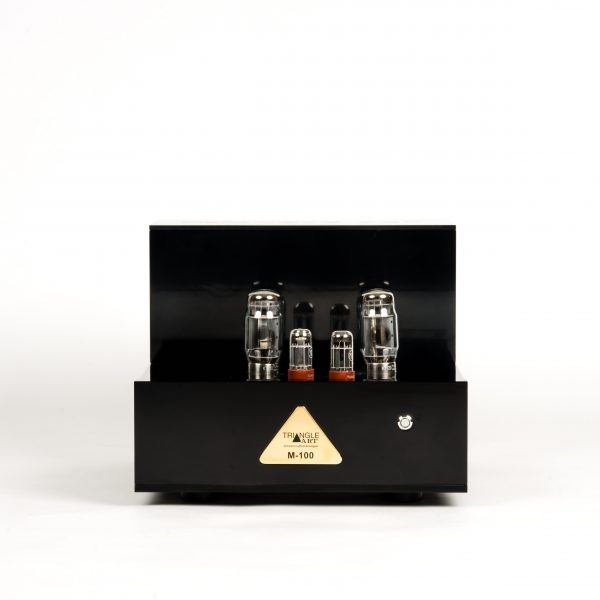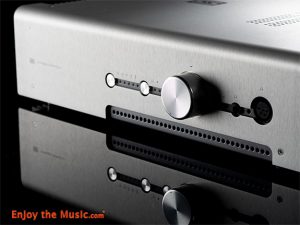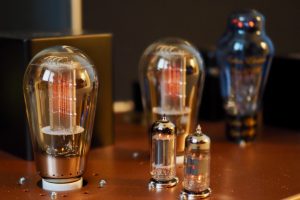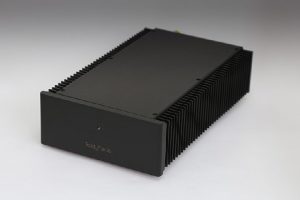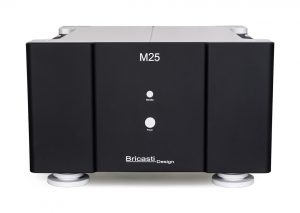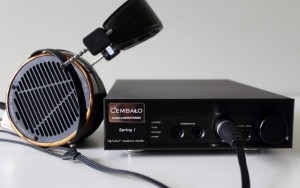Big Amps, Big Power Done Right.
PBN is pretty well known for Peters Noerbek's wide range of speakers, a pair of M2!5s which I recently reviewed (HERE) took up floor space at my home for the majority of this review. So what better time to give his new Olympia mono amps and Olympia Lxi 2 chassis preamp a go? No time like the present, now or never, strike while the iron is hot mate! Oh, and did I mention they are 800 watts a side that run class A up to 70 watts? Well they are, and they do.
Unboxing and placing the amps will likely require some thought about placement as they are big, big, BIG! The look of Olympias was surprisingly loved by my wife and her business partner. "Wow! Check those out!" she proclaimed. All black, a simple white screened logo on the front wave lined engraved front panel, and a rear panel that is all business. No gleaming aluminum or polished bits that I tend to favor. I tilt towards a very style forward look, but I have to tell you, these monoliths kind of create their own statement. And that statement is, "We are here with one, and one purpose only." Each weighing 185lbs, I'd suggest unpacking them as closely as possible to their final resting place. You will thank me for that piece of advice.
The Olympia, as mentioned, will pump out 800-watts into 8 Ohms, and double down to 1600-watts into 4 Ohms at less than 0.1% THD. Power Transformer 4000 VA with capacitance of 1 Farrad. There is a high/low bias switch with the high idling at 550-watts and the low at 300-watts. There is a proprietary 75 Ohm BNC input along with the XLR and RCA. There is a high and low bias switch on the font panel. There are two sets of outputs as well. The price for the Olympias is $49,995.
The Lxi preamp is a two box affair, with three balanced inputs and two RCA inputs. There is also a 75 Ohm BNC output for use with PBN's proprietary impedance-matched interconnect system. The Lxi has an all-FET circuit design with external CPS power supply (two 375VA transformers). This features high capacity energy storage of 80K uF filter capacitance. Price is $25,000.
I typically go for the auto engine analogy when reviewing a big amplifiers such as the Olympias. Second only to cat videos, I watch a great deal of drag race videos on Facebook/YouTube. I've loved the straight race since "Big Daddy" Don Garlits, Don "The Snake" Prudhomme, Tom "The Mongoose" McEwen, and Shirley "ChaCha" Muldowney dominated the 70's drag race scene. My favorite these days are open track race events. Bring down your ride and have a go. Of course you get your lambo's, the muscle car line ups, and the current king of the quarter mile, the McLaren 720S. A few can keep up with the McLaren up to around 100 MPH, then the McLaren's twin turbo V8 fully spools up and the car just vanishes into the horizon. That description in a general way describes my experience with the Olympias. I've had no shortage of experience with amplifiers. Of course, I have not heard them all, and would never make a definitive conclusion about what the best is out there. What I will say is that most amplifiers I've heard can keep up… to a point. And it's at that point the Olympias' horsepower kicks in and they just leave the others standing still. I cannot over emphasize this point. I have never heard an amplifier with the level of control, power, and pure traction where every watt is reaching the pavement creating a level of musical torque that just seems endless. I know I haven't gotten close to exhausting their power, and I often play very LOUD in a very large space.
Going loud is all fine and good. But until you've experienced how much control the Olympias impart upon the drivers, instruments like drums and bass, whether synth or plucked, slapped or other wise set into motion, the transient clarity followed by impact like you have likely never heard, I know I hadn't, and I've been at this hobby for 30 years, you just won't know what you've been missing. The first track I almost always use is Disturbed's "Asylum" to see what I'm dealing with. When that track kicked in, I couldn't believe what I was hearing. It was as if someone had remastered the recording and got it really right. The control is not limited to the bass. All throughout the mid range, no matter how loud, the imaging and stage never ever collapses or homogenizes textures. The layers of guitars stay rock solid and anchored and the growling vocals, some of the best in the business, became more intelligible.
The Olympias have gotten me closer to a real live performance than I've ever been. The M2!5 speaker is largely responsible for this effect as well. These products create a synergy that is shockingly alive and dynamic. Until you hear how close you can get to live, you will walk in a zombie-like daze convinced you are close to live, you are not. Stanley Clarke Live at the Greek's "Minute By Minute" starts off with the bass, drums, and keyboard synching in the intro, the sax and guitar soon join, and the crowd cheers. As the dynamics swell, there is no ceiling where it flattens out or compresses. The music simply gets bigger and bigger with a sense of scale and volume of the venue. I have never felt like I was in the crowd to this level before. The band feels so present and tangible. Even good, but not great recordings of great music like Red Garland's "Dolphin Dance" from Bright and Breezy just springs to life, with Red's deft touch becoming more noticeable and effective. It's not as close sounding, but it captures a mid room perspective, not with just a sense of discernible distance, but a true sense of scale and dynamic shading. The Pass XA200.8, despite coming up 600-watts short, shared many of the same qualities. The Gryphon Antileon Evo, of which I have much experience with, as well has its own very seductive ways with the music. I would need to hear all three of them through the M!25 to offer a fair comparison.
Okay, we have had some fun here with all the fireworks. But that is truly only a portion of the story. What these traits add up to contributes to the bigger picture. The Olympias deliver goosebumps. And not the subtle bumps rising in the presence of a cool breeze. Listening to Pink Floyd's "Comfortably Numb" from Pulse, the enormity of the sound field, the depth, the tonality and grainless-ness of textures all come together in some real time elixir spilling deep into the musical monkey brain, causing a waterfall of tingling from the back of the neck to the tops of my feet- kind of bumps. Same with the Stanley Clark track, and the Disturbed track, and too many more to name.
Willie Nelson's "Night Life" is a recording everyone who cares for Mr Nelson's styling as I do must own. The huge stage of the orchestra swelling and receding behind Willie is dead center in the room, voice and guitar are a really beautiful production. Despite a bit of edge to Willie's voice, the collection of classic songs begs to be played straight through. The Olympias possess an elasticity to the sound distilling the tight, brittle bloomless-ness of solid-state your pappy may have experienced down to a bare minimum. Remember with all the control the Olympias possess, it could be very easy to over shoot and shut down the richness and blossoming harmonics, yet it does no such thing through the M!25.
Which leads to the next point. The Olympia amplifiers and Lxi preamp are very neutral. Recording to recording, production qualities are instantly understood. It does pose the question, if they have so little sound of their own, how do you describe the sound? It is an ongoing circular debate. The better the component, the less of its own sound should be apparent, yet the more we have to say about it. A bit of cognitive dissonance. But I digress.
Where this neutrality becomes very useful aside from distinguishing the recording's origins and pure musical enjoyment, is what the changes made upstream yields. Changing from the PBN Lxi preamp to the D'Agostino Momentum was not a difficult shift to grasp. The Momentum is a bit of yin to the Lxi's yang. It's a shade darker, a shade warmer, a touch deeper in stage, and just as wide, if not as forwardly detailed. Textures are a bit more organic, but these qualities come at a 30% premium in price. The Lxi was livelier where the Momentum's depth of stage seemed to shave a hair off dynamics. The bass is an equal in terms of extension, a bit heavier feeling-voiced, more bottom up, though with the tone controls the Momentum possesses, it can be transformed in either direction. I have grown so accustomed to having the tone control feature, especially one as well executed as the D'Agostino, I would find it hard to live without. But the Lxi was in the same league, and despite the quirk of not having the ability to switch sources with the remote, and no balance adjustment, I could live very happily with the Lxi. The one caveat beyond those inconveniences would be the Lxi would best suit a system that needs a kick in the pants, and move the stage and upper frequencies a bit forward in mix.
$75k for the Olympia mono blocks and the Lxi preamp combo is a big ask, no doubt about it. But there are those with the cash that keep products like these alive and well. The steep climb for PBN is that it's not a marketing company like so many high end companies have largely become. Peter has kept his company near and dear, doing what he wants, when he wants, and how he wants to. And I dig that.
From what I've heard from not only the Olympia duo, but the M2!5 speakers as well, this company is one of the longest running under the radar brands in audio. Peter has several lines of speakers, takes on custom projects, builds stunning turntables and electronics. Ultimately he is a one of a kind renaissance man, beyond simply capable. He is a brilliant designer with a keen sense of what makes music come alive, and should be mentioned in the same breath as any audio designers you care to mention.
Upon the completion of this review I received the PBN MR!777 speaker, a nearly 7 ft tall 650 lb speaker clad in stunning burled walnut. The evaluation of these gorgeous behemoths will largely reflect further experiences of the Olympia amplifiers. Consider the MR!777 review a part 2 for the Olympia amplifiers as well.
Olympia EB-SA3 Amplifiers
Retail: $49,995
Lxi Preamplifier
Retail: $25,000
PBN




